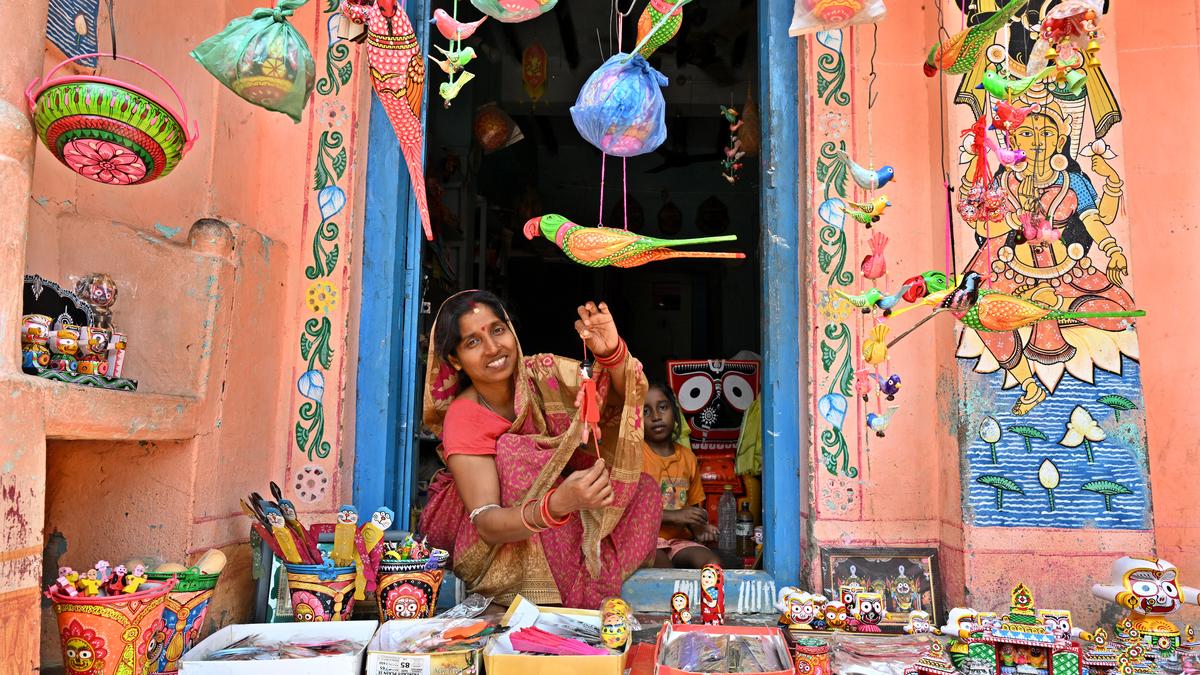
Raghurajpur: Odisha’s living heritage village where art tells a timeless story
The Hindu
Discover the living heritage of Raghurajpur, Odisha's artistic village, where traditional crafts thrive amidst modern challenges.
At Raghurajpur, art flows like a river through time. Situated in Odisha’s Puri district, this heritage village is a living testament to creativity. Narrow, winding lanes are lined with homes that double as workshops, their verandahs adorned with intricate Pattachitra scrolls, delicate palm-leaf engravings, and vibrant wooden toys.
Seated on low stools, men and women work side by side — bringing mythological tales to life with fine strokes and natural colours, or carving intricate motifs into dried palm leaves. The scent of fresh paint and the rhythmic tapping of chisels fill the air, echoing age-old traditions passed down through generations.
Inside one such home, 27-year-old Jyotiranjan Nayak sits beside his father, carefully etching designs onto palm leaf, continuing a family craft. His father, a master artist, began training him at the age of six. “Most children here start learning at three. In fact, they pick up a paintbrush before they even hold a pencil. I was a bit late,” he says with a smile.
Jyotiranjan is one of 180 members of the Raghurajpur Chitra Karigari Co-operative Society, an organisation dedicated to preserving these traditional art forms.The village is home to several national award-winning artists who helped bring recognition to this once-obscure settlement. In 2000, following a two-year research and documentation initiative by the Indian National Trust for Art and Cultural Heritage (INTACH), Raghurajpur was officially developed as Odisha’s first heritage village.
Every house here is painted with vibrant Pattachitra motifs. “During the pandemic, when business came to a halt, the Lalit Kala Akademi and Odisha’s Department of Language, Literature and Culture provided financial assistance of ₹10,000 per household, encouraging us to paint our homes with these traditional murals,” says Jyotiranjan.
Adding to the village’s charm, the homes themselves serve as living galleries — adorned with painted teapots, carved betel nuts, brightly coloured coconuts, palm-leaf engravings, Pattachitra paintings, and papier-mâché toys and masks made from cow dung paste.
Palm-leaf carvings, known as Talapatra Chitra, date back to the 2nd Century BCE, when they were used as manuscripts to record sacred texts and epics. The fine incisions on dried palm leaves, filled with natural inks, have preserved mythological tales, religious scriptures, and royal decrees for centuries.





















 Run 3 Space | Play Space Running Game
Run 3 Space | Play Space Running Game Traffic Jam 3D | Online Racing Game
Traffic Jam 3D | Online Racing Game Duck Hunt | Play Old Classic Game
Duck Hunt | Play Old Classic Game











